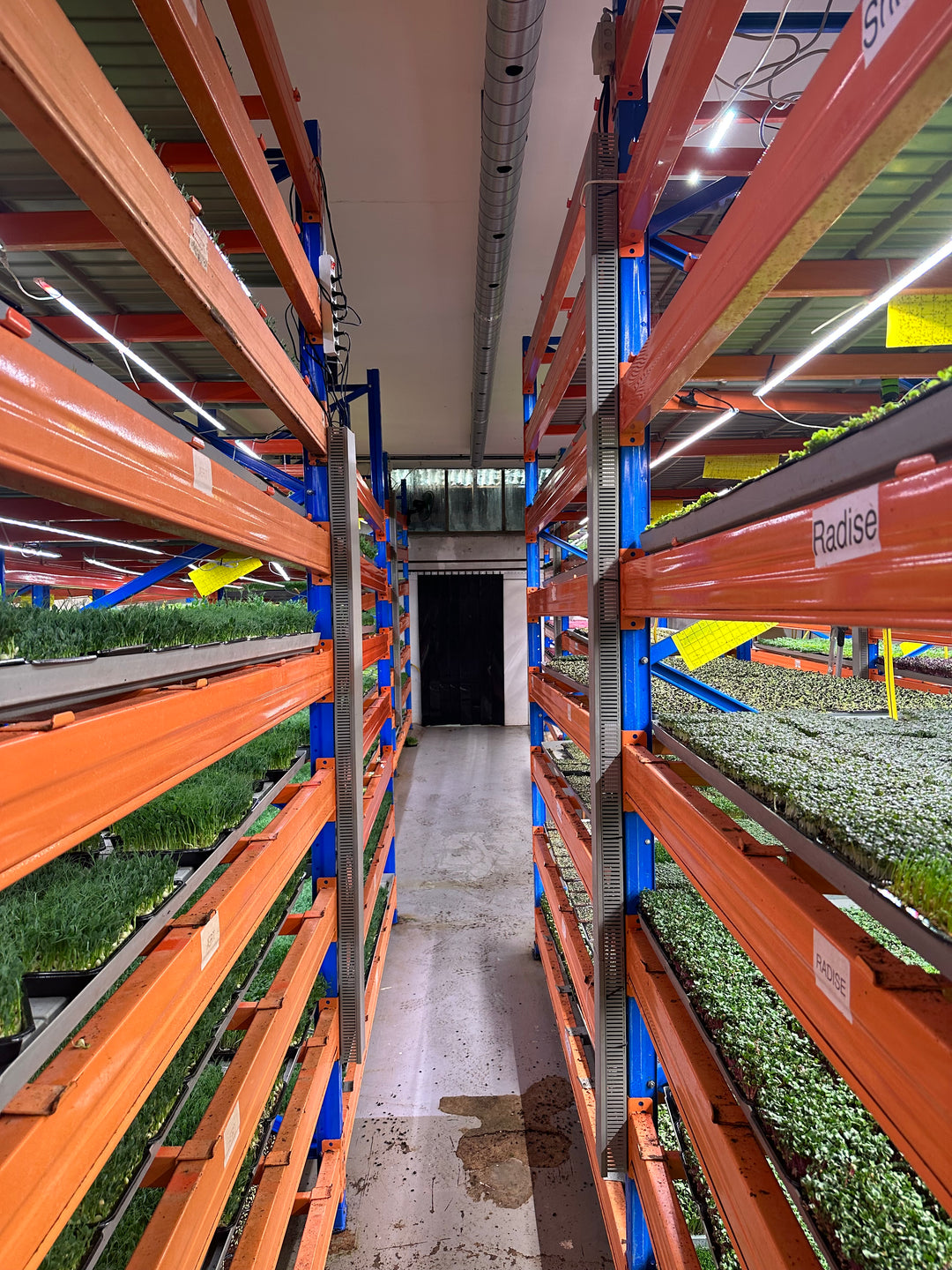Cultivating Community: How Hydroponics and Vertical Farming Benefit Local Areas

In an era of increasing urbanization, climate volatility, and concerns about food origins, local communities are seeking resilient and sustainable solutions for their food needs. Enter hydroponics and vertical farming – two innovative agricultural methods that, when combined, offer a powerful pathway to strengthening local food systems and bringing a wealth of benefits directly to the people.
The Foundation: Understanding Hydroponics and Vertical Farming
Before delving into their community impact, let's briefly define these interconnected
practices:
● Hydroponics: This is a method of growing plants without soil, using mineral nutrient
solutions dissolved in water. Instead of drawing nutrients from soil, plants receive
them directly from the circulating water, leading to faster growth and more efficient
resource use.
● Vertical Farming: This involves cultivating crops in vertically stacked layers, often
indoors, and typically incorporates hydroponic, aeroponic (misting roots with nutrient
solution), or aquaponic (combining aquaculture with hydroponics) systems. This
stacking maximizes growing space per square foot.
The magic happens when these two approaches converge, creating highly productive,
controlled environments that can be established almost anywhere.
Revolutionizing Local Food Access and Security
One of the most immediate and profound benefits of hydroponics and vertical farming for
local communities is their ability to enhance food security and access, particularly in urban
areas often termed "food deserts."
● Fresh Food, Close to Home: By locating vertical farms within or on the periphery of
cities, fresh produce can be grown mere miles, or even blocks, from consumers. This
eliminates the need for long-distance transportation, meaning vegetables, fruits, and
herbs can be harvested at their peak ripeness and reach tables within hours,
preserving nutrients, flavor, and extending shelf life. For residents in urban centers,
this means consistent access to high-quality, nutritious food that might otherwise be
scarce or expensive.
● Year-Round Availability: Unlike traditional outdoor farms susceptible to seasonal
changes and adverse weather, hydroponic vertical farms operate in controlled
environments. This allows for continuous, year-round production of a wide variety of
crops, ensuring that communities have a steady supply of fresh produce regardless
of the external climate – a critical advantage during harsh winters or extreme summer
droughts.
● Bridging Food Deserts: Vertical farms can be strategically placed in neighborhoods
lacking access to healthy food options. By converting abandoned warehouses, unused lots, or even basements into productive farms, these initiatives can transform food deserts into areas where fresh, affordable produce is readily available, improving public health and combating diet-related diseases.
Economic Opportunities and Local Empowerment
The establishment of hydroponic and vertical farms within communities brings tangible
economic advantages:
● Job Creation: These operations create a diverse range of local jobs, from farm
managers and technicians to sales, logistics, and research and development roles.
This generates employment opportunities within the community, offering pathways to
new skills and contributing to the local economy.
● Support for Local Businesses: Vertical farms often source materials, equipment,
and services from nearby suppliers, strengthening the local business ecosystem and
fostering a network of interconnected enterprises.
● Economic Diversification: For communities heavily reliant on a single industry,
agriculture, particularly innovative forms like vertical farming, can introduce new
economic pathways and build resilience.
● Reduced Economic Leakage: Keeping food dollars within the local economy by
purchasing from local farms helps to circulate wealth and stimulate further economic
activity.
Environmental Stewardship and Resource Efficiency
Hydroponics and vertical farming are inherently designed for efficiency, leading to significant environmental benefits that positively impact local communities:
● Drastic Water Conservation: Hydroponic systems recirculate water, often using
90-95% less water than traditional field farming. This is a game-changer for regions
facing water scarcity or communities keen on responsible resource management.
● Minimized Land Use: Vertical stacking allows for immense productivity in a tiny
footprint. This reduces pressure on arable land, leaving more natural spaces for
ecosystems or other community development, especially crucial in densely populated
urban areas.
● Reduced "Food Miles" and Carbon Footprint: By growing food locally, the energy
and emissions associated with long-distance transportation, refrigeration, and
multiple distribution points are drastically cut. This contributes directly to cleaner local
air and helps communities meet their climate action goals.
● Elimination of Harmful Pesticides and Herbicides: The controlled indoor
environment of these farms largely removes the threat of outdoor pests and weeds,
eliminating the need for chemical pesticides and herbicides. This means safer food
for consumers, less chemical runoff into local waterways and soil, and a healthier
environment for everyone. Fostering Education, Engagement, and Well-being Beyond the tangible food and economic benefits, hydroponics and vertical farming can
enrich the social fabric of a community:
● Educational Hubs: Vertical farms can serve as living classrooms, offering tours,
workshops, and educational programs for schools and community members. This
provides hands-on learning about sustainable agriculture, healthy eating, and
environmental stewardship, inspiring a new generation of growers and conscious
consumers.
● Community Engagement and Social Cohesion: Farms can become gathering
places, fostering a sense of community ownership and pride. Residents can
participate in volunteer programs, Community-Supported Agriculture (CSA)
initiatives, or simply connect with their food source and the people who grow it. This
strengthens social ties and creates a more connected community.
● Health and Wellness Promotion: Access to fresh, nutrient-dense produce directly
supports healthier eating habits, helping to combat diet-related illnesses within the
community. The visual appeal of indoor farms can also serve as a calming and green
presence in urban landscapes, subtly contributing to overall well-being.
● Innovation and Problem-Solving: Local vertical farms can become incubators for
agricultural innovation, fostering local talent and encouraging creative solutions to
community-specific food challenges.
Conclusion
Hydroponics and vertical farming are more than just efficient growing techniques; they are
powerful tools for community transformation. By placing food production back at the heart of local areas, they enhance food security, create economic opportunities, champion
environmental sustainability, and cultivate stronger, more engaged communities. As we
navigate the complexities of a changing world, embracing these innovative approaches to
agriculture offers a vital pathway to building healthier, more resilient, and self-sufficient local food systems for generations to come.


